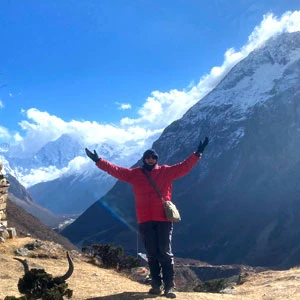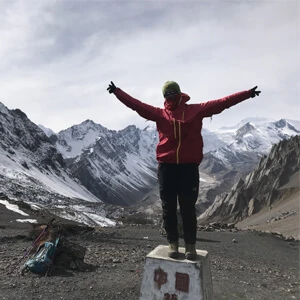Lower Dolpo Trek Overview
The Lower Dolpo Trek offers a chance to join Nepal Trekking Experts on a trek through one of the most remote regions of Nepal. Located in the northwest, the journey begins with a short scenic flight from Kathmandu to Nepalguni, then a further 30-minute flight to Juphal, the starting point for the trek.
Lower Dolpo is a region of dramatic landscapes and culture far different from that which the majority of experienced trekkers might be familiar with in other parts of the country. The Dolpo region lies in the rain shadow of the towering mass of Dhaulagiri (8167m), resulting in a semi-arid and remote area that’s inextricably linked to Tibetan culture and well-preserved against the encroachment of the outside world, with local practices and beliefs that seem like echoes to a distant past, including some of the purest forms of Buddhism. The whole region is said to have been blessed by Guru Rinpoche during the 8th century and has long been a refuge for devout Buddhists in troubled times.
In addition to the intriguing insights of the local culture the Lower Dolpo Trek opens up a plethora of opportunities to observe some of Nepal’s unique animals, including wildlife endemic to the region such as blue sheep, various types of deer, mountain goats, black bear, and the most elusive and legendary species of them all, the snow leopard.
Another of the trek's highlights is Shey-Phoksundo National Park, home to the spectacular Phoksundo Lake, a serene body of water surrounded by soaring cliffs that seems like a dreamy image from a fantasy novel.
The trek isn't only about stunning lakes and wildlife, though. The breathtaking heights of not one but two high passes await trekkers willing to take on the trail's challenges, firstly Numa La at 5309 meters, then Bagala Pass a day later at 5169 meters.
So if the Lower Dolpo trek's many charms appeal, why not contact Nepal Trekking Experts and let our team start planning for your adventure to the region?
Likewise, you may also choose Manaslu Circuit Trek, Upper Mustang Trek, Nar Phu Valley Trek, and many more graceful packages.
Trekking Difficulty In Lower Dolpo
Located in one of the lesser-explored regions of Nepal, the Trek to Lower Dolpo tantalizes the adventurous spirit with its remote beauty and rugged terrain. This particular trek is considered to be a strenuous journey due to its demanding altitude, rugged terrain, and remote location.
One of the significant challenges of this trek is its dynamic landscape. Here, the Lower Dolpo region is filled with steep ascents with rocky and uneven paths. During the journey, you will witness a quick shift in your environment as you move from lush greenery and terraced fields to alpine surroundings, deep gorges, and high-altitude passes.
In fact, the Lower Dolpo Region Trek is a journey of contrasts as the trekking trail blends pristine forests, charming villages, alpine meadows, and dramatic high-altitude deserts in a single package. Furthermore, the trail is remotely located as it is less frequented by tourists hence, providing isolation as well as tranquility. Here, trekkers are required to walk for 6 to 7 hours every day on this trek which demands a good level of physical fitness and stamina.
Similarly, the altitude level might be another concerning point during the Lower Dolpo Trek. While most parts of the journey do not go higher than 4,000 meters in elevation, you will still have to cross two high-altitude passes; Numa La Pass (5,309 meters) and Bagala Pass (5,169 meters). Therefore, with these altitude gains, you might suffer from altitude sickness, if not acclimated properly.
Generally, the initial symptoms of altitude sickness are nausea, fatigue, shortness of breath, dizziness, and headaches. If any of such symptoms prevail, you should stop ascending and listen to your body to rest. Likewise, even after a rest, if your body feels tired and the symptoms worsen, you should quickly descend with the help of your guide.
Advancing forward, the Lower Dolpo Trek falls in a rain shadow area which keeps the trekking route drier than those that do not fall in rainshadow areas, such as the Manaslu Circuit Trek, Annapurna Base Camp Trek, or Everest Base Camp Trek. However, having said that the trail does experience unpredictable weather conditions, especially when you are at a higher elevation. Even a sunny and bright day might get gloomy, filled with clouds or might experience occasional snowfall - all within a matter of a few minutes. Hence, proper gear and preparation are a must!
Despite these challenges, there are numerous rewarding points with Lower Dolpo Trek. Also, remember often difficult journeys are the ones that take you to beautiful destinations.
Best Time To Trek Lower Dolpo
While you can embark on the Lower Dolpo Region Trek at any time of the year, Autumn (September to November) and Spring (March to May) are the most favorable with clear skies, mild temperatures, and relatively stable weather patterns.
Here, Autumn is the peak season and offers stable weather with crisp air and the best visibility. Additionally, the air is chilly but not cold, providing a comfortable trekking experience. The average temperature during this season ranges between -15 to 18 degrees Celsius.
Moving on, Autumn also brings the clearest skies of the year offering unobstructed panoramic views of the mountain ranges. Trekking during this season also gives you an opportunity to embrace the festive month which adds extra enjoyment to the journey.
Likewise, Spring is another peak season and a particularly beautiful time to explore the Lower Dolpo region. During this time of the year, the trekking trails are adorned with wildflowers bringing a burst of colors throughout the region. Furthermore, the weather is stable with moderate temperatures ranging between -15 to 20 degrees Celsius.
Similarly, you can also trek this trail during the Monsoon season as this region falls under the rainshadow area bringing little to no rain. Due to this particular reason, the trekking routes are particularly dry and the weather is still amazing.
However, having said that the Monsoon season brings heavy downpours in the other parts of Nepal which may cause a real challenge at times. These rainfalls may result in landslides which may postpone or cancel certain plans on the schedules. Therefore, if you are traveling during this season, add a buffer period to your itinerary to avoid a rush.
Lastly, the Winter season brings the coldest days of the year with heavy snowfall and freezing temperatures. Due to the snowfall, there might be high chances of closing the high passes and tea houses. Since this season brings extreme trail conditions and temperatures, this trek is not recommended in winter.
Lower Dolpo Trekking Permits and Cost
Given the remote and protected status of the Lower Dolpo Circuit Trek, you will require specific permits to ensure your safety and the conservation of the area. The permits you will need for the journey are the Shey Phoksundo National Park Permit and the Lower Dolpo Restricted Area Entry Permit.
Furthermore, it is important to note that you will require at least two people in the group to embark on this journey. Well, the Shey Phoksundo National Park Permit will cost you USD 25 per person, and the Lower Dolpo Restricted Area Entry Permit will cost you USD 20 per person per week plus USD 5 per additional day per person.
To obtain these permits, NTE needs your valid passport copy with a visa copy. You can get the Shey Phoksundo National Park Permit from Kathmandu itself. As for the Lower Dolpo Restricted Area Entry Permit, it is issued by the Immigration Office in Kathmandu and your local trekking agency will get this before you start your trek.
Booking And Payment With Nepal Trekking Experts
To book your trek with us, you have to send a deposit of 10% of the total cost of the trek. Please also forward a copy of your passport, a passport-sized photo, and full flight details if and when available. For your convenience, you may also forward the deposit to us online through our website. It is completely safe, and as soon as you make it, you will get an automatic receipt in your inbox. The rest of the payment can be paid upon arrival.
Likewise, if you want a longer serene and scenic Himalayan adventure, you should consider combining the Upper Dolpo Trek as well.
If you have any questions, do not hesitate to contact us anytime. We are always ready to assist.




 based on 7 reviews
based on 7 reviews





